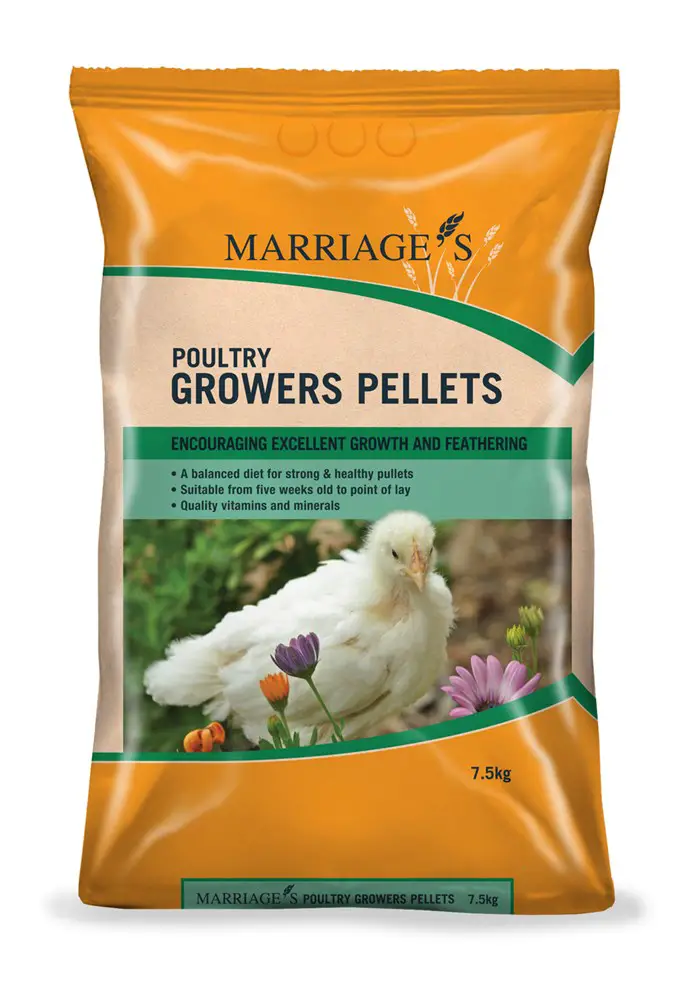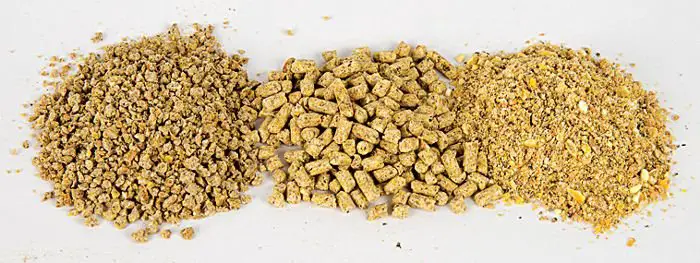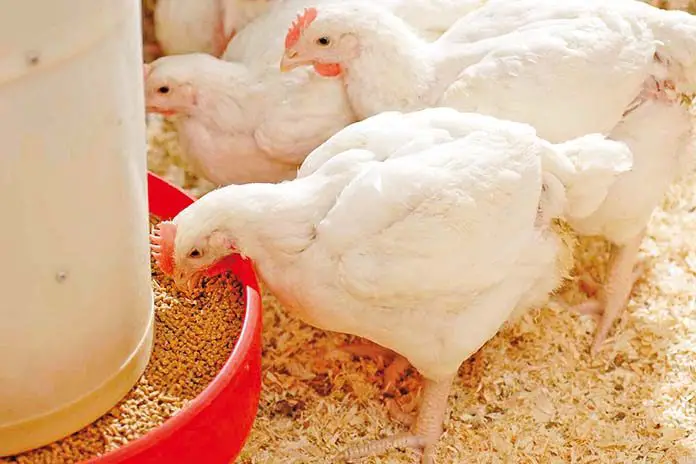Since the 1960s poultry has quickly moved in to replace other animals as a source of protein both in terms of meat and eggs. Chickens supplied 12% of meat in the 1960s and are now supplying almost 40% of the meat consumed globally according to the Food and Agriculture Organization (FAO). The versatility of the domestic chicken as a source of meat, eggs, or both/dual purposes requiring a small footprint makes them ideal to raise both on a large or small scale. Chickens are also very efficient in converting feed into protein than other animals for example chickens will need one and a half kilograms of feed to produce one kilogram of meat compared to three kilograms and twelve kilograms for pigs and cattle respectively. Nutritionists have managed to develop diets to match the chicken’s nutritional needs at each stage of production and growth further improving the efficiency with which chickens are fed.
Contents
What is Grower Feed
Animal nutritionists are always working to improve chicken diets to address all economic aspects of the production cycle by looking at profitability, time scales, and response to nutrients and ingredients used to make the chicken feed. One way to increase profitability is to reduce the wastage of expensive nutrients by supplying just the right amount to support productivity. Chicken diets are hence divided into feeding phases to avoid over or undersupply of nutrients at each stage of the chickens’ life. At the beginning of life when the chicken is still growing, for example, protein is required in larger amounts than later on in life when the chicken is no longer growing as much. So by design chicken feeds will have progressively declining crude protein and amino acid levels as the birds grow. Grower feed is normally an intermediate diet between the starter feed and the finisher or production feed in chickens. Grower feed is a diet formulated to promote the growth of the chicken at the least cost providing all growth requirements of specific chicken categories in line with the ultimate goals of the farmer. The idea of supplying a grower feed to chickens is to achieve that balance in animal feeding where the animals’ needs for survival and growth are met.
Chicken Stages of Growth
In chicken production, there are basically four stages the embryo, chick, pullet, and adult stage, however, due to the relatively short cycle of the broiler or meat-type chickens they are basically slaughtered before they reach the adult stage. In the embryo stage, the chick basically lives off the egg yolk reserves, at the chick stage, a starter feed is fed and at the pullet stage a grower feed is fed to the chickens. Taking all that into consideration the point at which to feed the grower feed is hence not determined by explicit age in days but by nutrient requirements of the different chicken breeds and growth targets expected. The nutritional profile of the grower feed will also be determined by the breed of chicken. Below are examples of feeding recommendations for broiler and layer-type chickens as a comparison.
Table 1: Broiler chicken three-phase feeding program
| Feed | Protein % | Calcium % | Phosphorus % | Energy (MJ/Kg) | Feeding Phase | Amount Of Feed required |
| Starter | 23 | 1.1 | 0.9 | 12.4 | Day 1-10 | 400g |
| Grower | 21 | 0.9 | 0.85 | 12.6 | Day 11-24 | 1400g |
| Finisher | 18 | 0.85 | 0.75 | 13.2 | Day 25-slaughter | 2300g |
Table 2: Layer Chicken phase feeding program
| Feed | Protein % | Calcium % | Phosphorus % | Energy (MJ/Kg) | Feeding Phase | Amount Of Feed required |
| Starter | 19 | 0.8 | 0.6 | 11.0 | Week 1-6 | 1000g |
| Grower | 16 | 0.8 | 0.6 | 11.2 | Week 7-17 | 5000g |
| Layer | 15 | 3.5 | 0.5 | 11.4 | Week 18-Depletion | 120-125g/day |
As shown above, the grower is that transitional feed from starter to finisher in broiler chickens and production feed in layer-type chickens. It will be lower in crude protein than the starter but higher in energy to support growth during the grower/ pullet stage. Nutrition at this stage is geared at supplying nutrients for the development of the skeletal system to support the weight of the growing chicken and store calcium in layer chickens for future use when the chicken starts laying eggs. The suggested feeding amounts and days are purely a guide as the farmer can adjust them by evaluating the chicken flocks’ performance. If for example if the broiler chickens are not yet on breed standard weight the farmer should feed the grower feed for a bit longer until the birds catch up.
Ingredients for Chicken Grower Feed
The choice of ingredients chosen to make grower feed is important due to the fact that chickens have limited ability to digest other nutrients when still young like fibre, and oils. With grower feed, the inclusion of higher fibre ingredients can be increased for example brans from grain milling like wheat bran, maize bran, and rice bran which are high in fibre. These would be included in lower levels in starter diets because chicks cannot digest fibre well.
The Granularity of Chicken Grower Feed
Grower feed for chickens can be in two forms a pellet or mash, pellets are mostly fed to broiler chickens while the mash is for layer chickens. Pellets allow the chickens to consume more feed in a short period of time, this has an advantage for fast-growing broilers but for layers, it can lead to issues of uneven feed consumption in the flock with bigger birds consuming much more leading to an uneven flock. Also, the reduced feeding time leads to boredom in layers which can lead to cannibalism.
Conclusion
Grower feed for chicken production improves the growth performance of the chicken flock in the most cost-effective way. Farmers feeding traditional two phase diets without the grower stage lose a lot of money right off the bat by feeding an expensive feed, starter, for longer than is necessary. In broiler chickens, issues with ascites, a condition caused by too rapid growth can kill the bigger birds further affecting the profitability of the flock, layers can also have leg issues as their bones will not be able to carry the bigger than normal birds.




